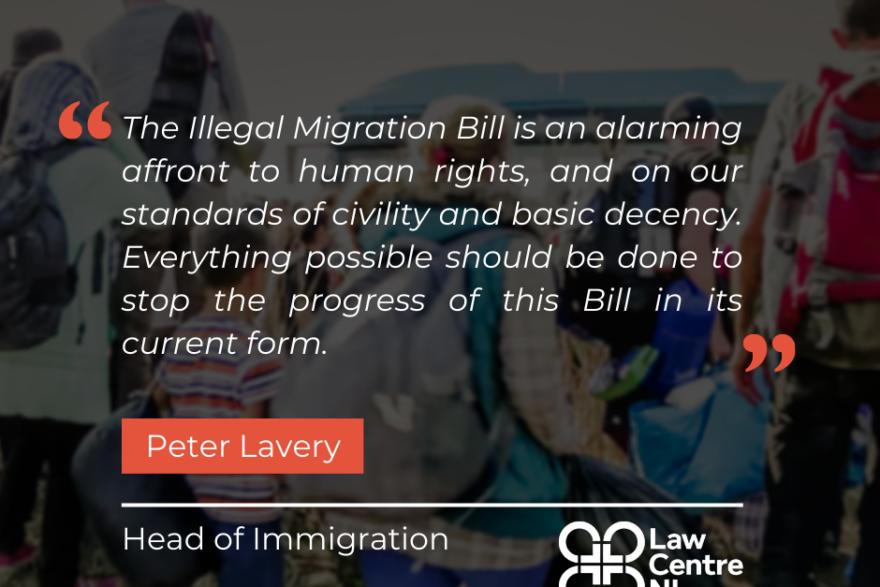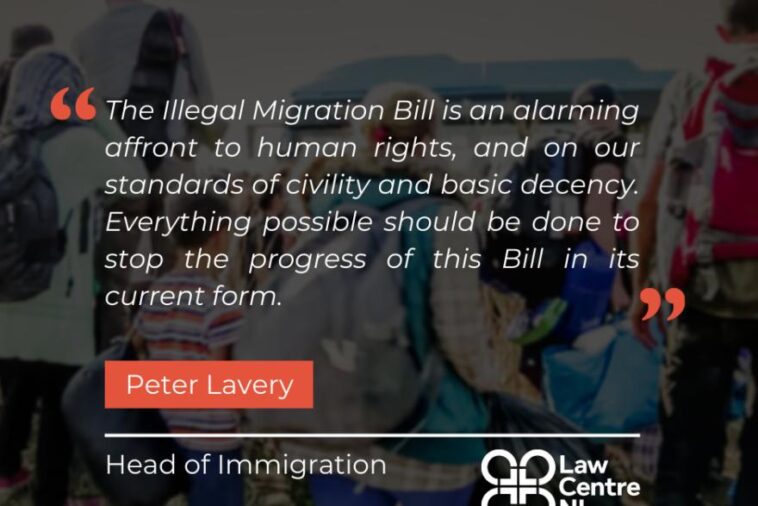
The Northern Ireland High Court Disapplies Sections of Illegal Migration Act 2023 (IMA)
The disapplication of any part of an Act of the UK Parliament is infrequent enough to be notable. Just a little over a week ago, the Northern Ireland High Court disapplied the second such Act within 6 months of the last one. But, instead of gloating, the alarm should be sounded in the Houses of Parliament as it is a powerful wake-up call for Westminster and Whitehall. In this blog post, we will discuss NIHRC and JR295’s applications for judicial review and why it was both foreseen and avoidable.
The Facts of the Challenges
The Northern Ireland Human Rights Commission (NIHRC) challenged the IMA by statutory right. The NIHRC, along with the Equality Commission for Northern Ireland are effectively the sentinels of the human rights guarantees under Article 2 of the Windsor Framework (WF). JR295 challenged the statute as an individual who was or would be at risk of deportation under some of its key provisions (when brought into force). JR295 is a minor asylum-seeker who fled Iran and arrived in the UK as an unaccompanied child on a small boat. Both challenges confronted a vast array of provisions in the IMA – 15 in total, of which 5 (relating to accommodation and support for unaccompanied children) were stayed pending a decision by the Government around those provisions. Returning to Iran – JR295 averred – would place him at risk of being imprisoned or killed.
The Determination of the Article 2 WF Claim
Article 2 WF is a complex provision to unpack. As set out elsewhere, the main purpose of the provision is to act as a safeguard against a diminution of rights – set out in the Belfast (Good Friday) Agreement (BGFA) and underpinned by EU law prior to Brexit – following Brexit. The key issue of whether or not there has been any diminution is set out in the Northern Ireland Court of Appeal’s six-stage test in SPUC’s application for judicial review.
In NIHRC & JR295, Humphreys J was tasked with ascertaining whether the IMA diminished rights in 9 specific contexts: (1) effective examination and grant of asylum status, (2) the lack of an effective remedy, (3) the removal of asylum seekers from the UK, (4) non-refoulement, (5) detention of asylum seekers, (6) trafficking, (7) the rights of asylum seekers who are children, (8) the rights of unaccompanied children specifically and (9) the age-assessment of children.
Following the SPUC test, Humphreys J determined that relevant rights in the BGFA were applicable to asylum seekers. The Judge next examined whether any of these rights were underpinned by EU law before Brexit and whether the IMA diminished any of them. This part of the judgment marks one of the most clearly structured and comprehensively explored examples of Art 2 WF diminution claims. Humphreys J follows the SPUC test – element by element – for each of the heads of claim and comes to the conclusion that the IMA diminishes rights under each claim. This model of clarity should be among the first sources for anyone who is interested in or faced with Art 2 issues.
Relevant EU law which had effect in Northern Ireland before Brexit – and which the IMA diminishes – include the Dublin III Regulation (examination of applications for asylum, including those brought by children), the Procedures Directive (for granting and withdrawing refugee status), the Qualification Directive (for third-country nationals and stateless persons to qualify for refugee status) and the Trafficking Directive (preventing and combatting trafficking and protecting its victims). One of the key ways in which the IMA diminishes the rights and protections contained in each of these is by the statute’s sweeping duty to disregard any claim of human rights breaches, refugee status, victimisation through human trafficking or judicial review from any person who enters the UK without compliance with the requirements of immigration law. This disregard renders much of the substance of the relevant EU law otiose.
The Character of Law under Art 2 WF
One threshold objection of the Government concerned a difference in the wording of certain provisions in the UK-EU Withdrawal Agreement (WA) and the WF. In the first subparagraph of Article 4(1) of the WA, the treaty makes a distinction between those provisions of EU law which are ‘made applicable’ via the WA (including the WF) and those which are ‘referred to’ in the body of either text. The Government argued that only the former should come with the bells and whistles of EU law – primacy, direct effect and disapplication of inconsistent domestic law – to name a few. The Court did not agree, finding that both kinds of
Originally Post From https://ukhumanrightsblog.com/2024/05/28/the-illegal-migration-act-and-its-inevitable-fate-in-northern-ireland-re-nihrc-jr295s-applications-for-judicial-review/
Read more about this topic at
Human Rights Day
Stand Up for Human Rights


